Roasted sago starch is the staple food for Mentawai people living in the moist, tropical forests of Siberut Island, off the coast of Western Sumatra in Indonesia. On the other hand, sago, boiled to porridge, is eaten as a staple food in areas of Papua New Guinea and the Pacific Islands, where rice farming is not possible.
Sago Palms
Sago palms have already been discussed on our website. A summary of the most important essential information about sago palms can be summarized as follows:
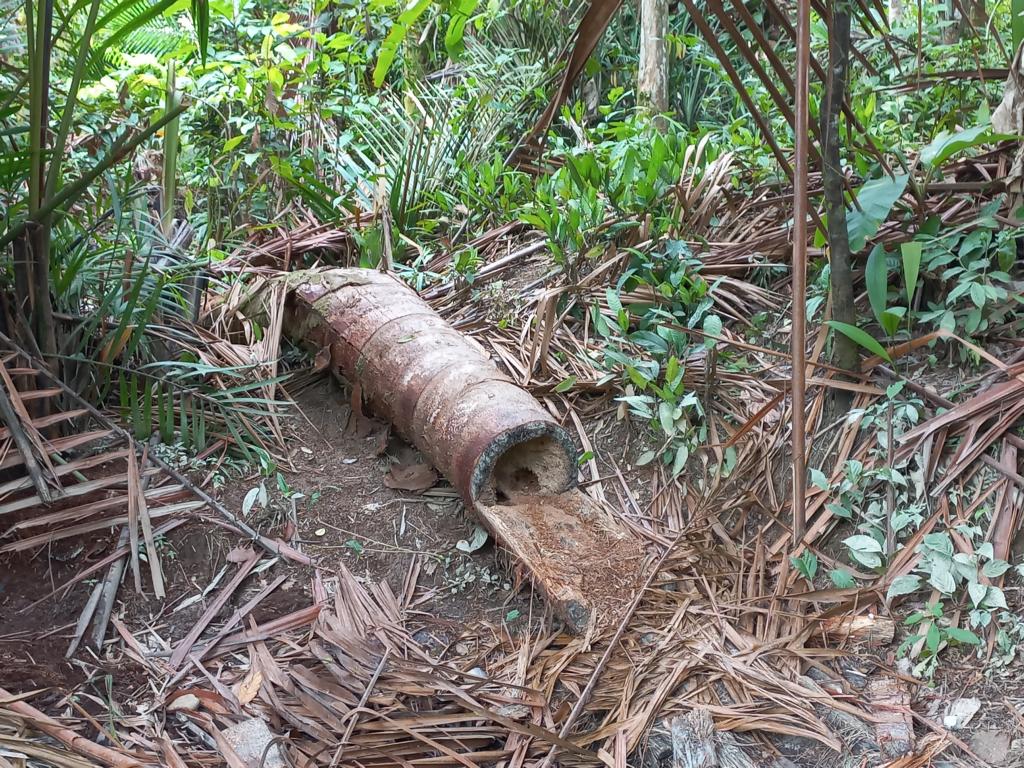
After cutting down a harvestable sago tree, there are always small saplings in the vicinity that will grow and take its place. A sago sapling needs about 10-12 years to mature before it is fully ripe for harvest. Usually, one good sago tree can yield 150 – 300 kg of dried starch. This lasts for a family of 4-5 members for about 8-10 weeks. Such a period is possible because processed moist, clean starch will not spoil for many months if stored in the uma in a container made from sago leaves.

Processing a Sago palm to Sago flour
One of our articles about Papua New Guinea described harvesting sago starch from a felled sago palm. This process is the same at Siberut Island but is more modern today than in the linked article above. Nowadays, people often use chainsaws instead of axes to cut the extraordinarily tough sapwood of the trunk.
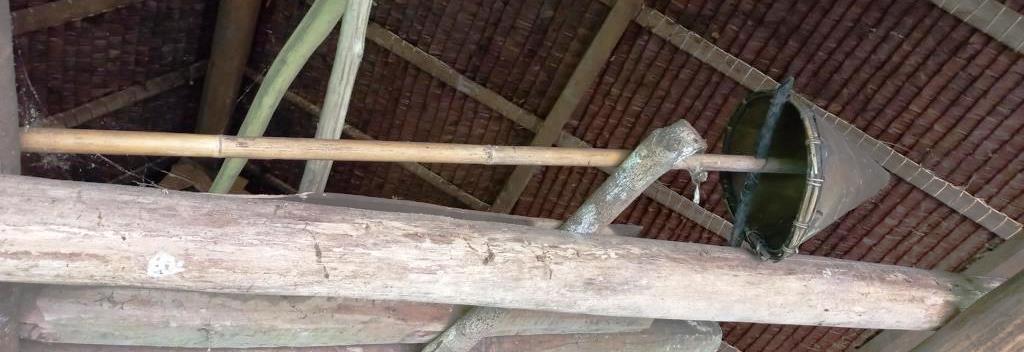
Instead of using leaf sheets for washing troughs and channels, raised platforms made from wooden poles and plastic sheets are commonly used. These semi-modern washing facilities are typically built over small streams. A bucket in cone shape with a long bamboo handle is used to lift water onto the platform to separate the starch from fibers. Such a lifting device can be seen in the above picture. After that, the water and starch mix is released into a dugout canoe, where the starch quickly settles to the ground, and the water overflows the canoe. The sago starch will be packed and carried home.
Turning Sago flour into staple food
Before roasting, the damp sago starch is sieved, as seen in the above video. The remaining fibers are removed by sieving, and the sago flour adopts a fluffy and pearly texture.
The sieved sago flour will now be spread onto a sago palm leaflet about 40 cm/16’’ in length. The video shows how much the leaflet is filled.
The loosely filled palm leaflet will now be closed with the second half of this leaflet, which will be screw-like and wrapped around with another leaflet strip. Sago sticks before roasting can be seen in the following pictures.
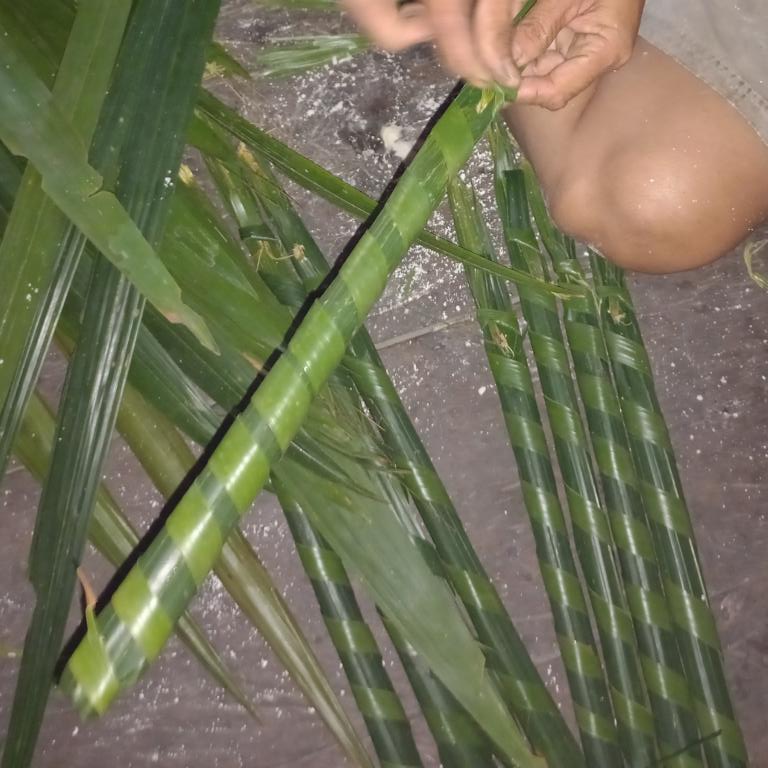
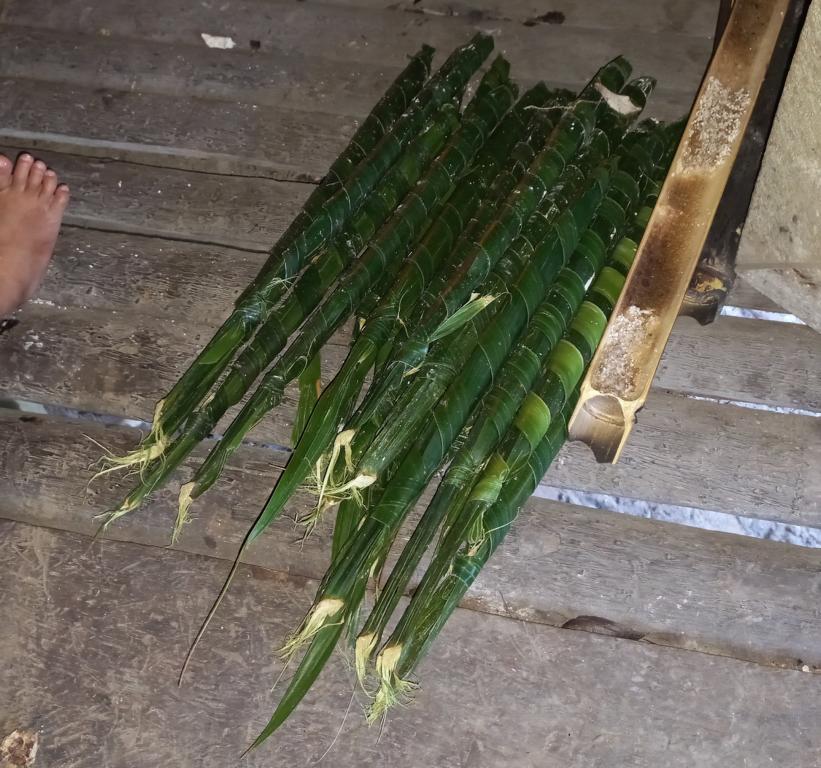
Roasting itself is done on the fireplaces in the Uma. Both fireplaces have a base for holding sago sticks, bamboo tubes, and a traverse log to keep them at the correct height and angle. To roast the sticks evenly, it is difficult for the ladies to keep the fire similar high over the whole fireplace length. Sago sticks are regularly turned around. Roasting these sticks on a fire takes around 20 minutes.
How Mentawai people ate sago at my stay
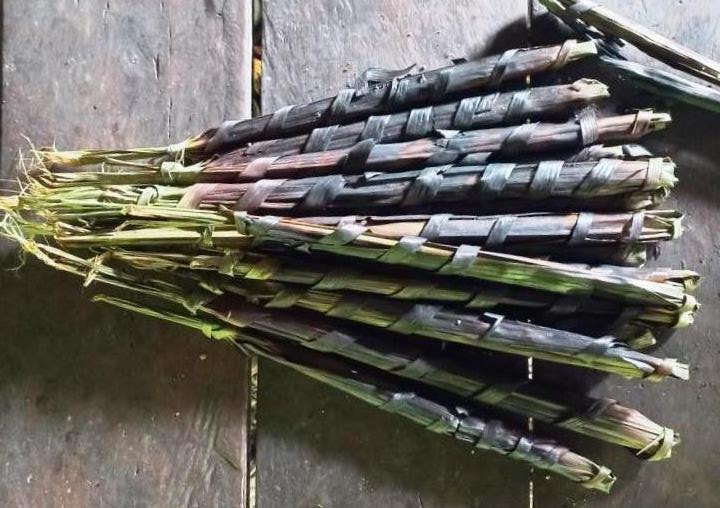
During my presence, sago was only eaten roasted, as described above. No sago porridge was prepared. Sago was also not consumed by preparing a sago goo, covering a bamboo stick, and roasting it over the fire. The Mentawai people I met were purely roasting sago semolina in sago leaves or bamboo pipes for eating.
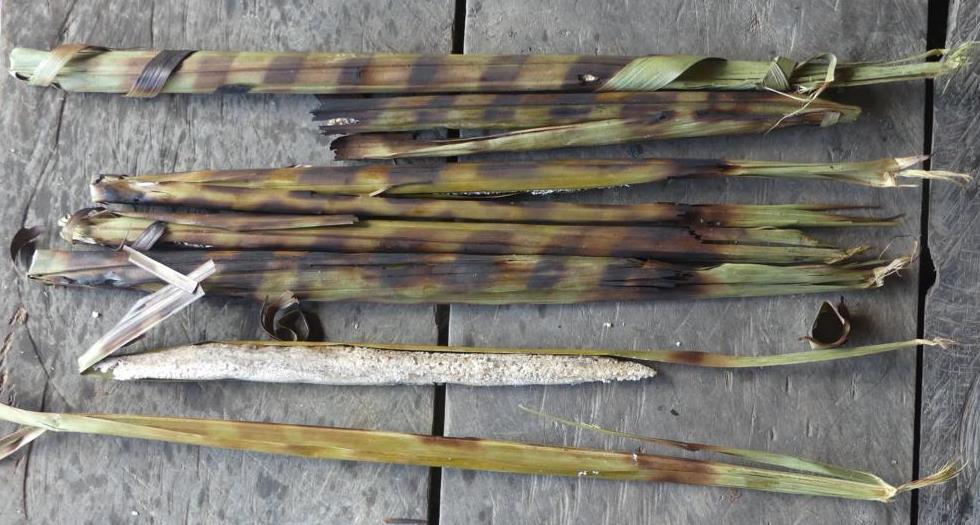
The bundle of sago sticks fresh from the fire was evenly distributed among the eating parties. These parties included the head of the Uma and his wife, one of their daughters with her husband and two kids, my interpreter with another Mentawai and myself, and others on various occasions.
Distribution of meat
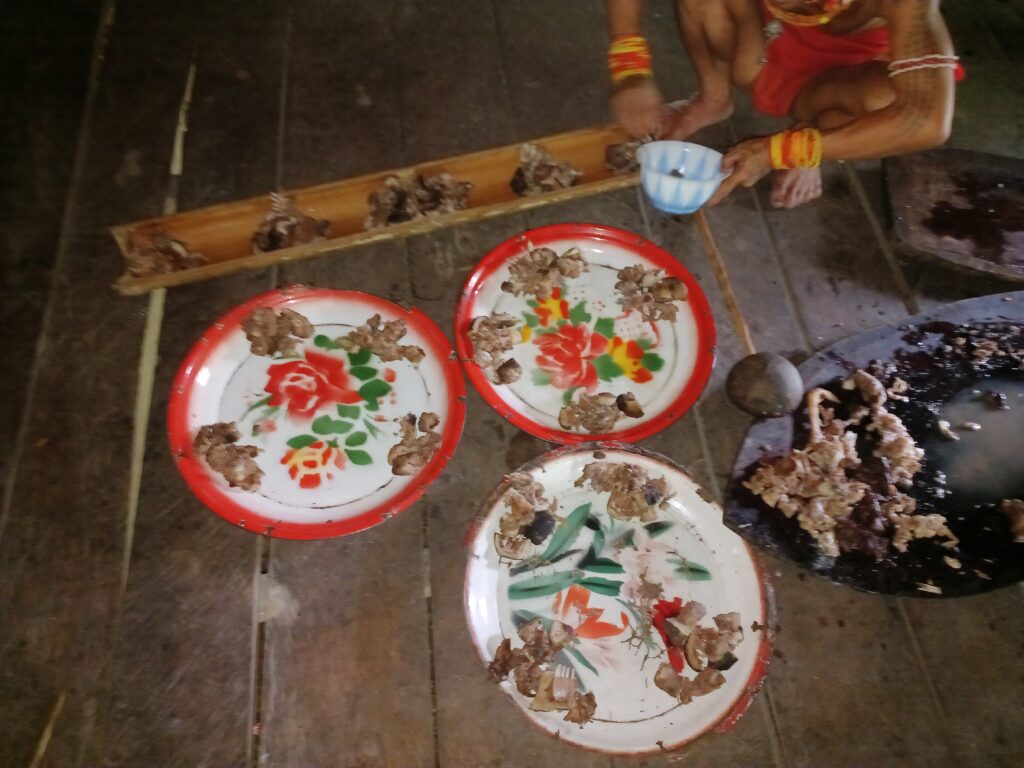
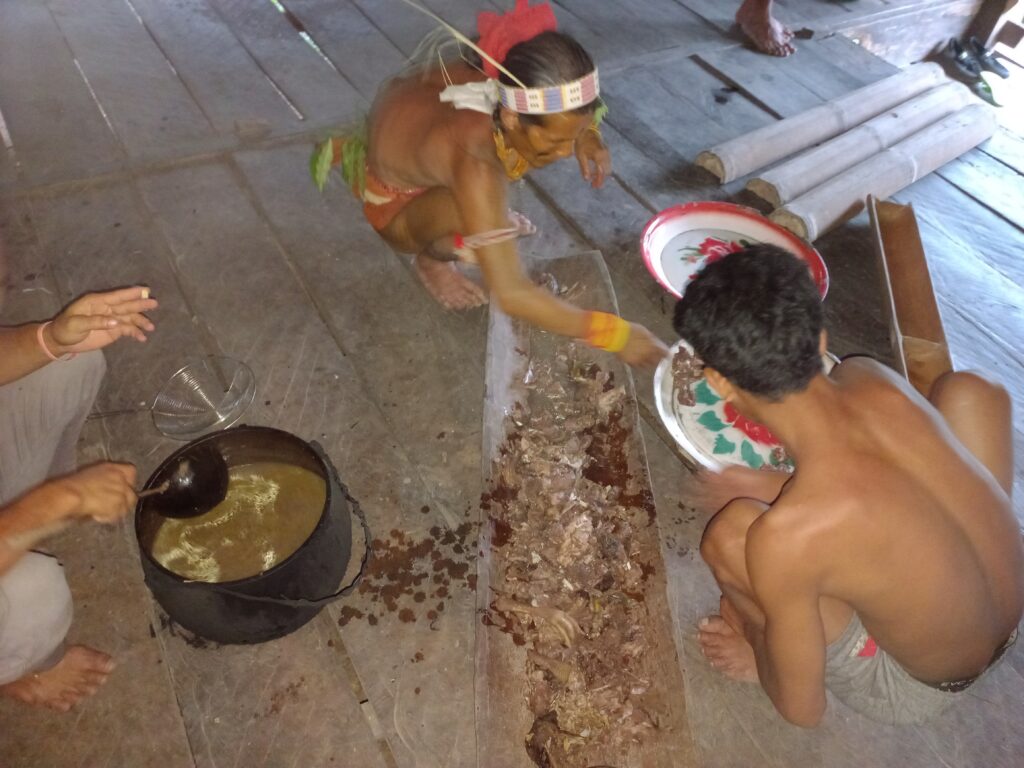
Every party sat in a separate circle on the floor. The head of the Uma had already distributed the cooked meat evenly among all parties into bamboo sections and plates. Next, the lady of the house distributed the roasted sago sticks evenly. Every person got three of them, and more were available to whoever wanted them.
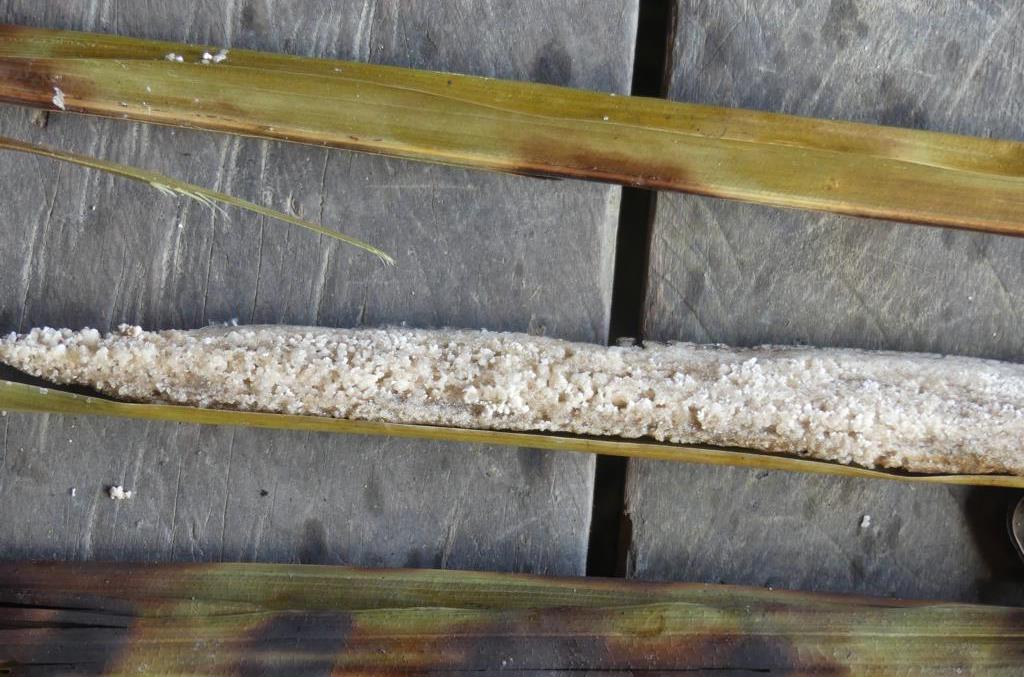
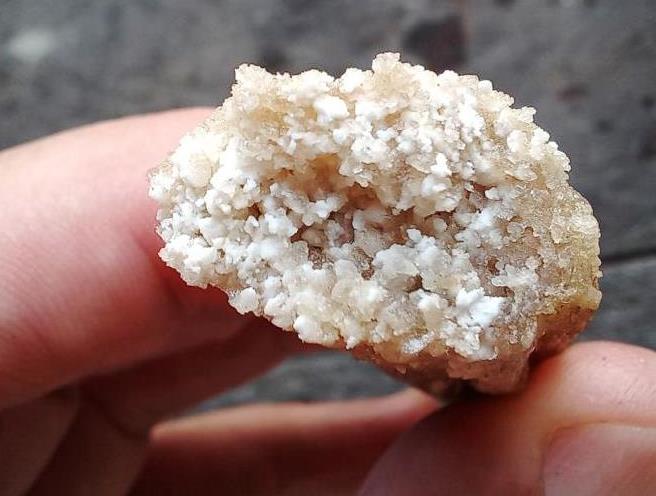
The sago inside the leaf bundles was very dry and pearly. It could be taken out of the wrapping leaf as one solid stick. This, however, is not pearl sago, which includes pearls the size of a pea. These sticks have a semolina- or couscous-like texture. And the taste of that roasted sago was like dry, crumbly sourdough bread.
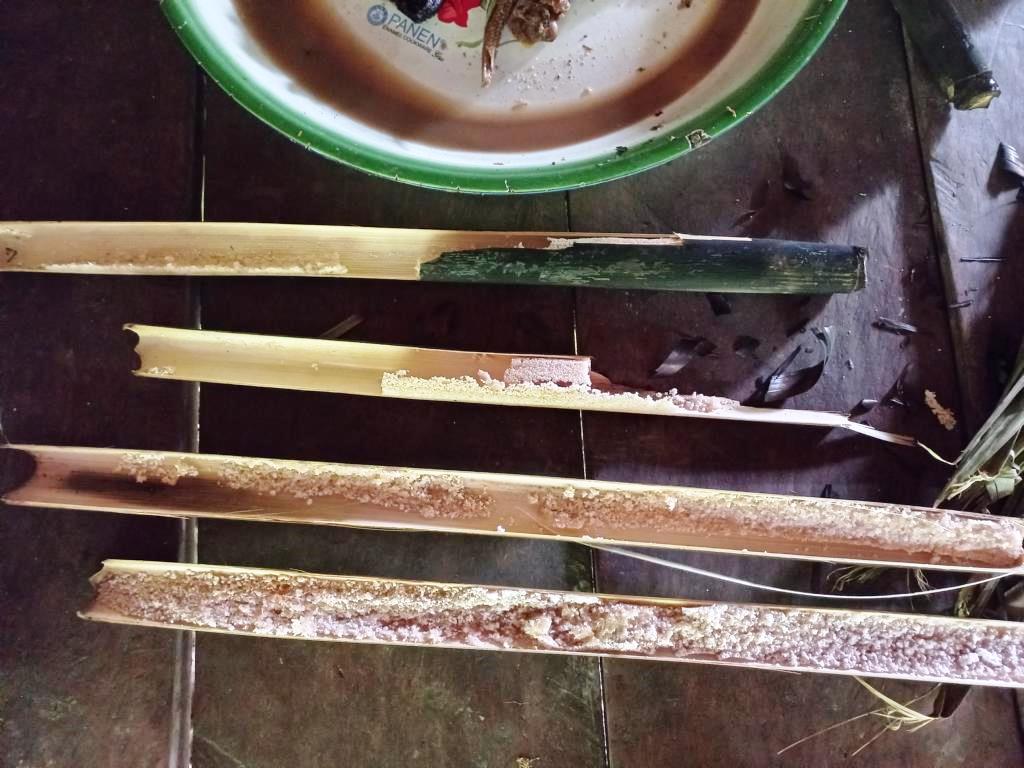
Also, sago in thin bamboo sections was served occasionally. These roasted tubes, however, were not as densely filled with sago as wrapped leaves. Some sections of the roasted sago flour inside had to be scratched out with a fingernail.
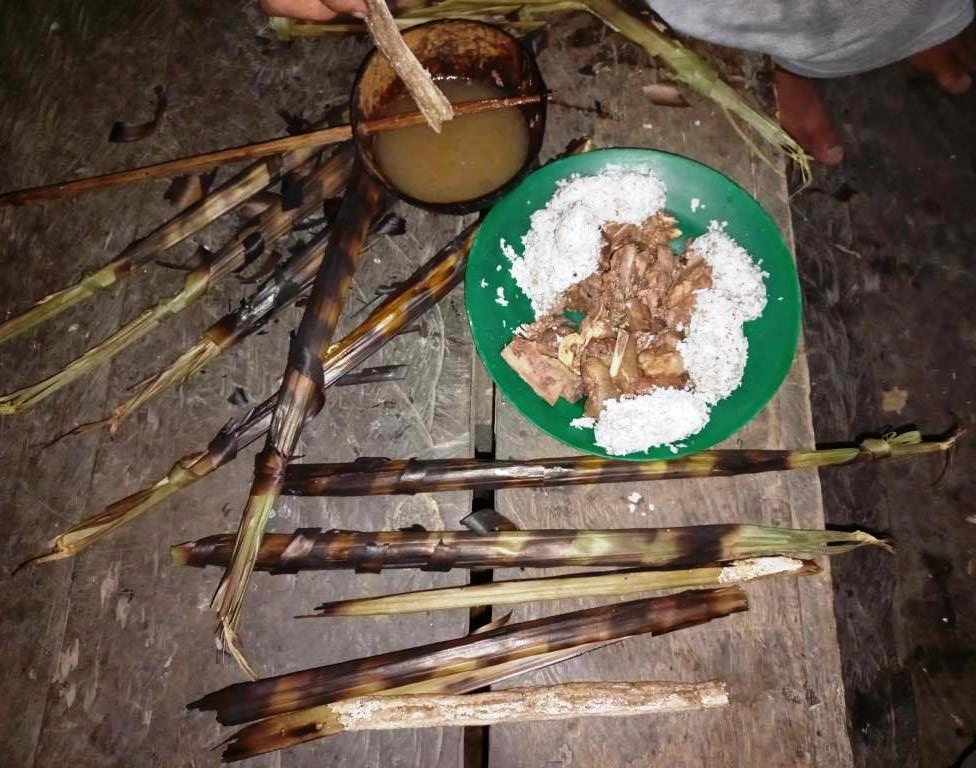
Roasted sago sticks were dipped into a ‘soup’ before eating. This soup was nothing but the water in which the meat was cooked. As a special treat, the head of the house sprinkled every ladle of soup with a tiny bit of salt.
Typical Mentawai food for large family gatherings and ceremonies was meat (chicken, pork, or game animals) cooked in water. Pieces of meat and cooking water (‘soup’) were served separately. There were no spices used besides a bit of salt. Roasted sago sticks were the staple food accompanying such a meal. As a special treat, mashed taro balls rolled in grated coconut rounded off such festive meals. On regular days, roasted sago sticks were eaten, accompanied by whatever was left over from former meals or freshly caught or collected animals and plants.
Nutritional value of Sago

Sago is starchy, has nearly no protein or fat, and is deficient in essential minerals and vitamins. As the above table shows, sago primarily consists of starch and water. Plus, an average amount of 0,7mg Fe/100g. And nearly half of the starch is difficult to digest for humans. It is, therefore, essential that sago is eaten together with protein (meat,…) and fat plus vegetables or other sources of minerals and vitamins. There are reports from Papua New Guinea that children only raised with Sago got potbellies and suffered from severe and even fatal malnutrition.
Lessons learned about roasted sago sticks at Siberut Island:
- Mentawai prefer roasting sago starch wrapped in sago leaflets over all other cooking methods.
- The texture of these roasted sticks was pearly and dry.
- To eat the sticks, it was necessary to either dip them into soup or drink water with them.
- The taste of the roasted sago starch was like sour bread.
.



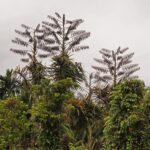
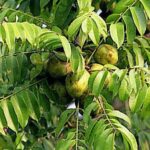
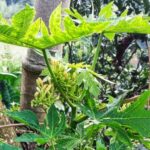
2 comments
Carl Welsby
Hi Kurt,
I visited Siberut in 1989 on an organised tour from Bukittinggi. We were I believe amongst the first 200-500 western people to visit then island. It was a 10 day stay and we travelled from Muarasiberut by canoe and then hiked to the first village. We’d stay a night or two and then hike to the next. Your description of sago processing is exactly as I experienced (taro was also a staple). The people were kind and hospitable and payment by our guide from Bukittinggi was made in the form of cigarettes, knives and utensils, not money. The men wore a bark loincloth and the older women wore a sarong and were bare breasted. It was an incredible experience. I see now that the island is much visited and has become a surf destination. I am glad I visited when I did. If you’d like to see images of my time there please visit: https://www.carlwelsby.co.uk/Private-images-and-videos/Indonesia/n-rsVMX9 Regards, Carl
Kurt Hoelzl
Hi Carl, thanks for your comment. I highly appreciated your photos from back then! Believe it or not, but Mentawai men living in the forests (and at the fringes of villages) are still wearing bark loincloths. It’s most convenient and, to this day, a must for SiKereis. Luckily, their cultural beliefs are so strong that they have been able to overcome the dark times of colonial missionaries, the Merdeka drive, and, hopefully, also withstand the onslaught of tourists. Kindest, Kurt